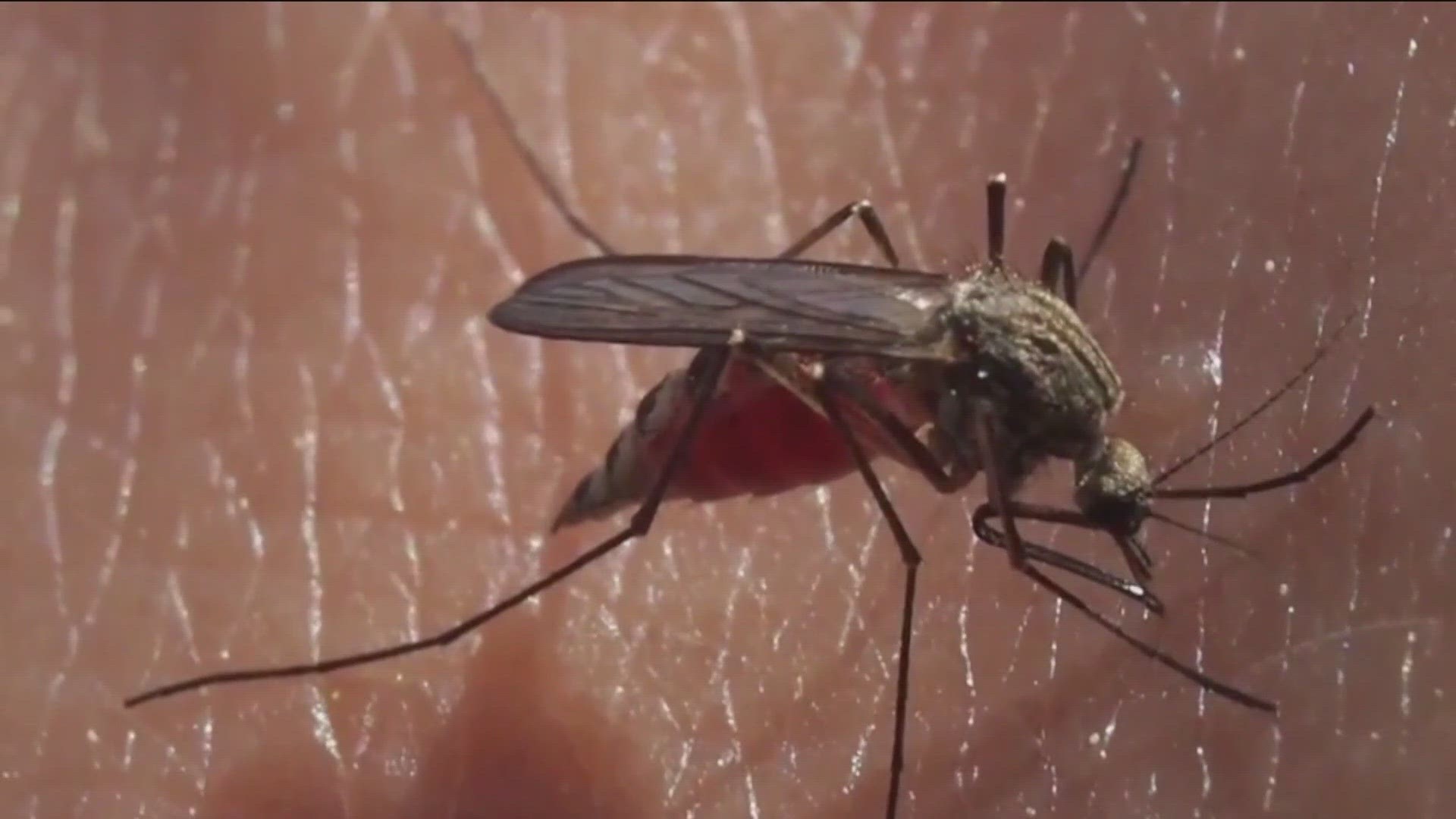SAN DIEGO — Heavy rains from tropical storm Hilary left plenty of flooding and standing water, and when combined with the sunny, warm weather, can make for prime mosquito-breeding conditions.
“Starting about a week or so from when the storm left town, that starts the clock ticking for when we might start to see the first mosquitoes come of that,” said Chris Conlan, supervising vector ecologist for the County of San Diego Vector Control Program.
“When you have a storm like that come through, there’s a lot of breeding areas that people could not be aware of in their yards that could start popping up these mosquitoes.”
After female mosquitoes lay their eggs in a wet area such as standing water, they’ll hatch into larvae that live in the water for 7-10 days while maturing into an adult.
“If you have any containers, cans, watering cans sitting around. It could be water in saucers underneath plants,” said Conlan. “It could be sagging tarps; anything that will hold water and sit there for a week or longer is potential.”
The Aedes aegypti mosquito, commonly known as the “yellow fever” mosquito, is not native to California and arrived in the region about 7 to 8 years ago.
“These mosquitoes breed in water sources that are oftentimes in backyards that can be relatively small water sources, so any pot or cup or container that might hold water temporarily in a backyard, for example, could be a breeding source,” said Dr. Alec Gerry, Professor of Entomology at UC Riverside.
Yellow fever mosquitoes new to our area, sometimes nicknamed “ankle biters,” seem to prefer biting humans over most other mammals.
“These mosquitoes tend to bite kind of low, so if you’re getting bitten by mosquitoes that are biting on the lower legs or around the ankles, especially if they look tiny or you don’t see them, these are probably Aedes aegypti mosquitoes,” said Dr. Gerry.
The County’s Vector Control Program monitors and treats certain areas to kill off mosquito larvae at about 1600 sites around the county, and for large or hard-to-access locations, a helicopter will go up to treat those areas.
“We can take care of many of those large mosquito breeding areas that are on public land, but all the individual backyards out there, that’s where we need the public to give us kind of a hand,” said Dr. Gerry.
WATCH RELATED: Here's why there are so many mosquitos in San Diego County

